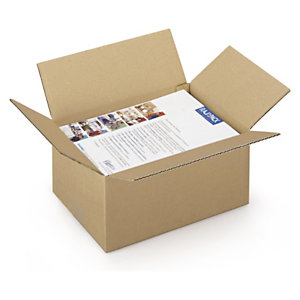The end of the calendar year is also the end of the financial year, which entails the need to archive accounting documents. How to properly archive documents, what to keep in mind, what boxes to use for storing documents?
The closing of the financial year is the time to archive accounting documents. All companies, not only public but also private ones, are obliged to archive documents created during the course of their business (not only accounting documents, but also employee documents). The time in which these must be kept is determined by specific regulations. In order to properly archive company documents, it is necessary to familiarise oneself with the subject and check which containers/packaging is best to use for this purpose. The best solution is, of course, special archiving boxes, which the RAJA company offers in its shop.
What is document archiving?
Archiving documents means collecting company documentation, classifying it and securing it so that it can be stored for the period of time indicated in the regulations. Documents are divided into 2 categories: A (archival material) and B (non-archival material). The former must be kept in perpetuity (e.g. civil status books, court records, public registers, maps and plans, technical documentation). Non-archival records, on the other hand, may be destroyed after a certain period of time. Documents marked with a B and a number may be destroyed after the year that is written next to the B. Documents marked BC (of short-term importance) may be destroyed or consigned to waste paper after they have been used. Category BE with a number – may be considered archival after a certain period of time.
Archiving accounting documents
Not all accounting documents need to be archived. Companies must keep the following: income and expense tax books, sales and purchase VAT registers, tax returns, sales records, accounting evidence, annual tax returns, inventory documents.
How long do I need to keep my documents?
The length of time that records are kept depends on their type – this is determined by legislation. Employee documents are kept for 50 years from the date of termination of employment or retirement of the employee (according to the Act on Pensions from the Social Insurance Fund). This applies only to documents evidencing the period of employment and wages received. Accounting records, on the other hand, must be kept for 5 years from the end of the calendar year in which the deadline for payment of tax expired (according to the Tax Code).
How do I archive documents in my company?
First, the documents must be allocated to the various categories described above. They need to be sorted chronologically and preferably put into shirts to further protect them from destruction. If you are dealing with documents such as receipts, which fade quite quickly and become unreadable, they should be photocopied or scanned. It is a good idea to place documents in binders, and these in boxes for storing documents. The binders and boxes should be labelled. The next step is to draw up a list of documents, so that they can be found quickly if necessary – in a company this is a free list, while in public administration units it is the so-called uniform material list of files.
Category B (non-archival) documents are to be discarded, i.e. destroyed after the expiry of the period for which they must be kept. For this purpose, it is worth equipping the company with a professional shredder.

Boxes for storing documents
Document filing cartons should be made of sturdy 3-ply cardboard – they need to be sturdy to last for the legally required length of time that records need to be kept. They should be provided with a space for labelling so that the contents can be easily identified. They should be resistant to moisture, dust and dirt.
The RAJA offers a wide range of cardboard boxes for document archiving, i.e:
- A5 and A6 cardboard boxes
- A4 eco cardboard boxes with height adjustment
- A5, A6 and A7 telescopic cardboard boxes
- A4/A4+ telescopic boxes
- A3 cartons with adjustable height
- A3 telescopic cartons
- A3 plain cartons
- A4 standard cartons
- cartons format A3/A3+
- cartons format A3 with adjustable height
- A5/A6 cartons with height adjustment.














